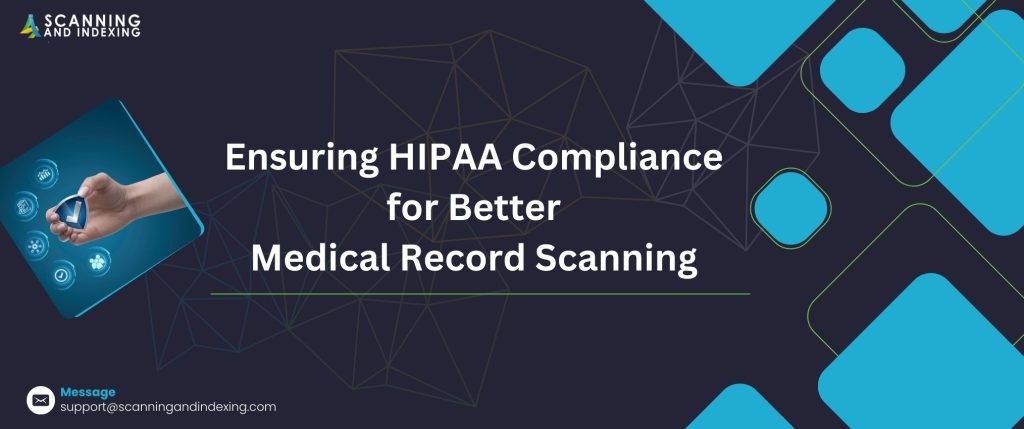What are the key requirements for ensuring HIPAA compliance in medical record scanning services?
Medical record scanning is one of the imperative operations across the healthcare industry. It allows related organizations to access different forms of medical and health records across multifarious systems and maintain an optimal information flow channel. Usually, the process involves scanning paper-based medical records, like patient histories, lab reports, research documents, and more, and then converting them into digital forms. Proper indexing is done for all the records which are then stored either on the on-site server or the cloud network according to the infrastructure layout.

Since medical record scanning exposes countless patients’ PHI or Personal Health Information to the outside world, maintaining HIPAA compliance is paramount. Whether it’s safeguarding electronic health records through encryption protocols or securing data sharing channels, organizations offering medical record scanning services should implement numerous strategies for adhering to HIPAA rules and norms. So, without any further delay, let’s have a look at the key strategies organizations should implement for HIPAA compliance.
Risk assessment
The first priority will be to conduct a detailed risk analysis, understanding the potential threats to data integrity, information confidentiality, and accessibility of digital health records after the scanning is completed. Apart from this, the impact of each analyzed risk should be assessed so that you can draw appropriate strategies for risk mitigation and safeguard electronic health records.
Patient data encryption
Every organization involved with medical record scanning service needs to implement high-grade data encryption protocols. This will help them to secure digital information once the scanning is complete. Implementing standard encryption protocols will mitigate the risks of potential data breaches and ensure the PHI doesn’t get exposed to the outer world where it can be manipulated for malicious purposes.
Role-based access control
Also, not all medical professionals or other associates working with the healthcare organization should be given access to the scanned medical records. Rather, the access should be limited and defined by the roles of the associates. This will help you in encrypting data and optimizing its visibility across different organizational levels. Also, it would be best if the master access control is given to minimal personnel so that they can control the data transparency.
Business Associate Agreements
If a third party is involved, it’s better to leverage BAAs or Business Associate Agreements for adhering to HIPAA compliance. It acts as a legal document, outlining the processes and measures to be followed between a covered entity and a business association to protect the sanctity and authenticity of PHIs. From describing the usage and access roles of PHI to the responsibilities of each involved party, every fact will be detailed in the BAA.
Data recovery and backup
Another key requirement of ensuring the medical record scanning service is compliant with the HIPAA standards and regulations is implementing appropriate data backup and recovery plans. When the paper-based documents are digitized, they should have proper backup copies stored in secured and encrypted locations. In case of any disaster or sudden data loss from the main server, these backup copies can be used to keep the information flow channel active between different healthcare organizations.
Incident response plan
An incident response plan will outline the strategies and actions to be taken in case of a potential data breach, exposing the electronic PHI to the outside world. From defining the steps of data confinement to designing notification workflows for all stakeholders, the plan will help healthcare organizations improve the response time and mitigate any threat to confidential patient health information and other scanned medical records.
Self-audits
Also, regular internal audits should be conducted to ensure the medical records scanning service remains compliant with HIPAA regulations and standards. Audit reports will help organizations assess the loopholes and backdoors in the implemented security layers, potential breach doors, and other discrepancies in encryption and security protocols.
Conclusion
While we have discussed the seven key requirements to ensure the medical record scanning process adheres to HIPAA compliance, organizations should pay attention to physical infrastructure security and appropriate data disposal routines. Only then they will be able to uphold the service commitment and maintain optimal trust with the patients with no disruption in information flow channels.
If you want to partner with us, send your requirements to [email protected].





